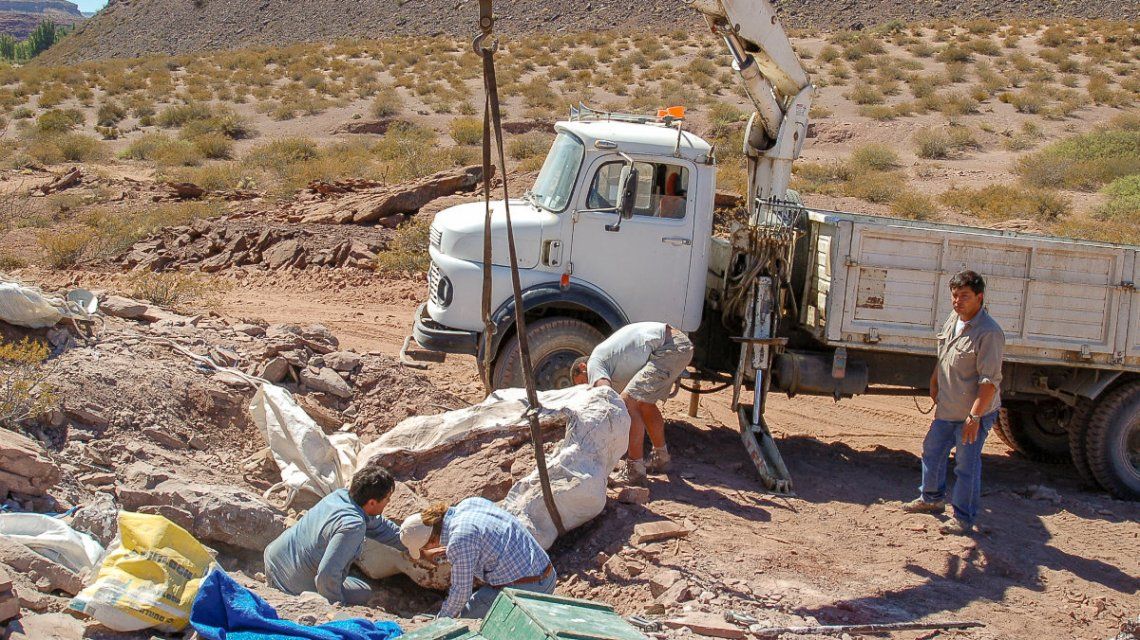
[ad_1]
After 110 million years, this sauropod appeared thanks to a team of Argentinean and Spanish paleontologists who discovered in Neuquén the bone remains of three specimens, reported today the National University of La Matanza (UNLaM).
"It's not just the discovery of a new species in a place where we do not expect to find fossils, if not that, the skull is practically complete", said José Luis Carballido, a researcher at the Egidio Feruglio Museum (MEF) of Trelew and Conicet, at the CtyS Agency of UNLaM.
The Lavocatisaurus agrioensis belongs to the group of sauropod dinosaurs, that is to say it was a quadruped herbivore with long neck and tail. This group includes giant species, such as titanosaurus Argentinosaurus huinculensis, the largest in the world with 40 meters long and "dwarf" animals of 10 meters.
"We found most of the bones of the skull: the muzzle, the jaws, a lot of teeth, as well as the bones that define the orbit of the eyes and we were able to perform a very complete reconstruction," explained Carballido, who introduced the world Patagotitan mayorum, the largest dinosaur known to date.
"There are 110 million years ago, the environment was very desert with sporadic lagoons, so we threw the fossil search out there"Recognized Carballido." This group of sauropods could have been adapted to move in rather arid places, with low vegetation, low humidity and little water, "he added.
The discovery consisted of an adult and two younger ones. "We believe that the measured adult copy 12 meters, while the juveniles oscillated between 6 and 7 meters, "summarized José Ignacio Canudo, researcher at the University of Zaragoza and responsible for the investigation.
"This discovery of an adult and two miners also meant the first record of a group move within the rebaquisáuridos dinosaurs," he added. Rebbachisauridae, which belong to the sauropod family.
In this sense, he recalled that "at that time, South America and Africa had not yet finished parting. Rebaquisáuridos dinosaurios have also been discovered in Africa and Europe.
"Until the discovery of Lavocatisaurus It was believed that the rebaquisáuridos had two facets of wear on the teeth, but we clearly see one that is not the product of the friction of the upper teeth with the lower teeth because the lower teeth are very small compared to the top teeth, "he explained.
From this observation, the authors of the study believe that this dinosaur had some kind of keratinous cover on the underside of the skull, with which he probably scratched the inside of the upper teeth each time that he wanted to cut the branches to feed.
This discovery revealed that the teeth of this species were elongated with the shape of a pencil and had the thickest enamel layer on the outer side, that is to say towards the lips; in addition, they had a low-angle wear facet that would be caused by said keratin structure.
The team of researchers who made the discovery published in the scientific journal Acta Palaeontologica Polonica It was composed by Canudo, Carballido and Alberto Garrido, the Museum of Natural Sciences Olsacher (MOZ) of Zapala, as well as by Leonardo Salgado, of the National University of Rio Negro (UNRN) and Conicet.
Source link

